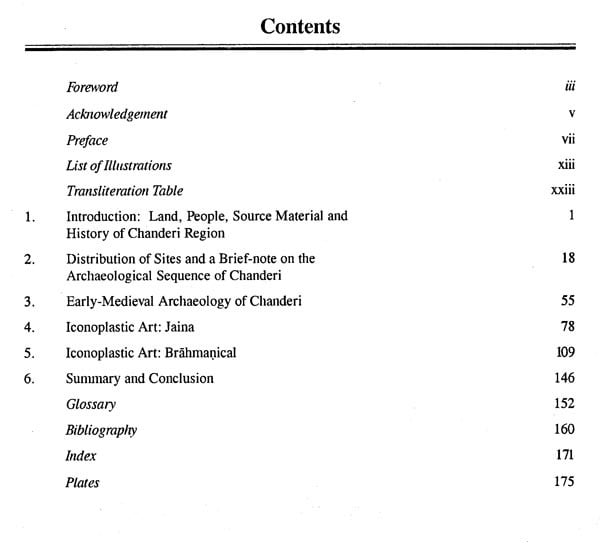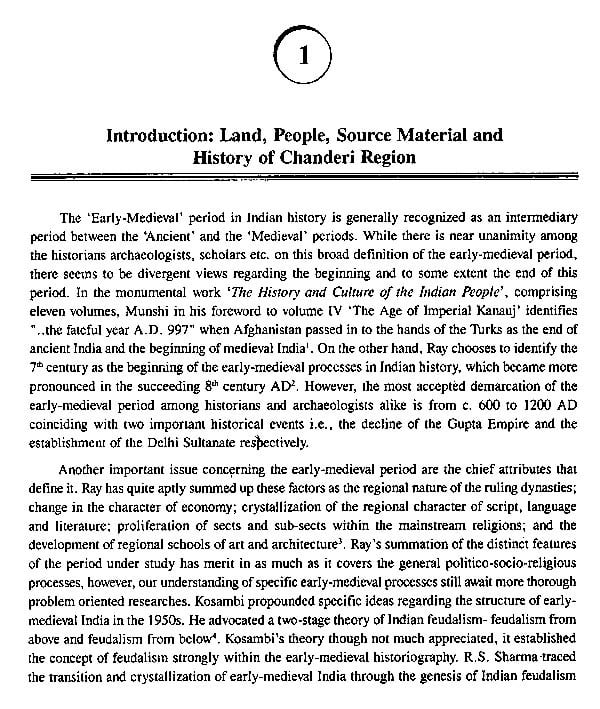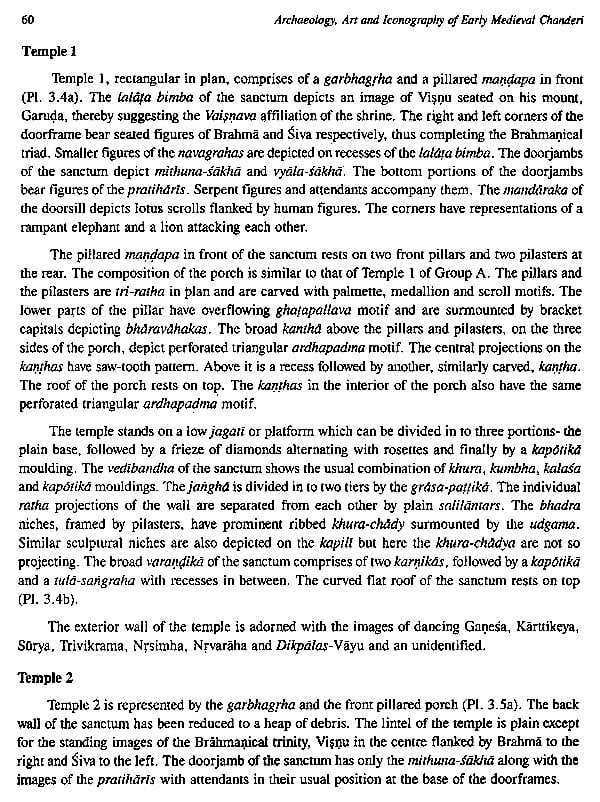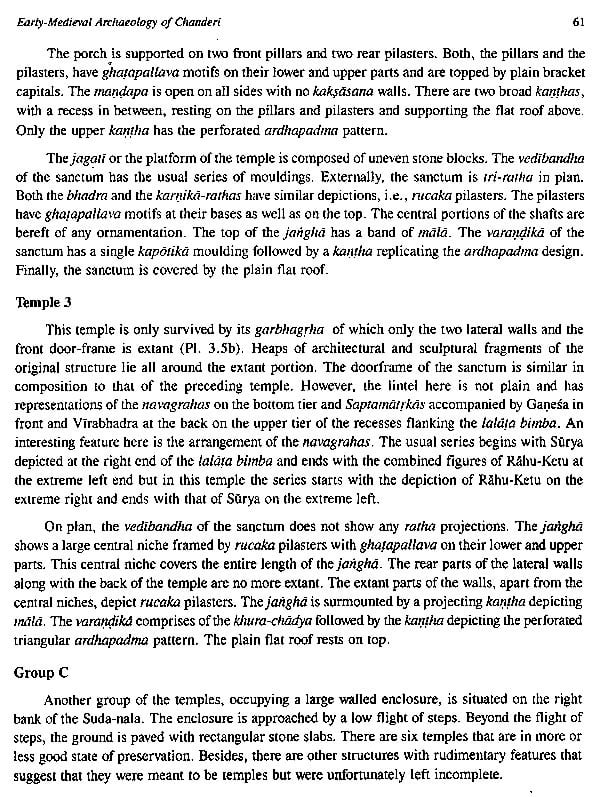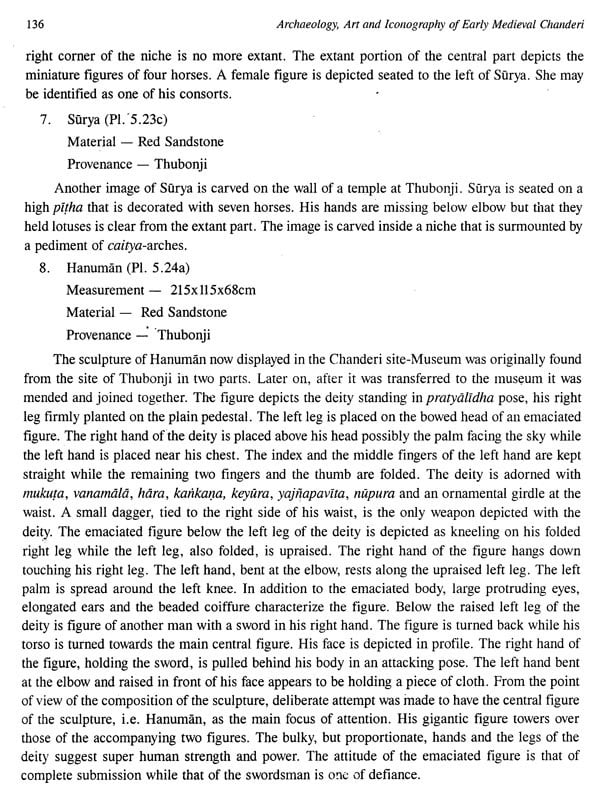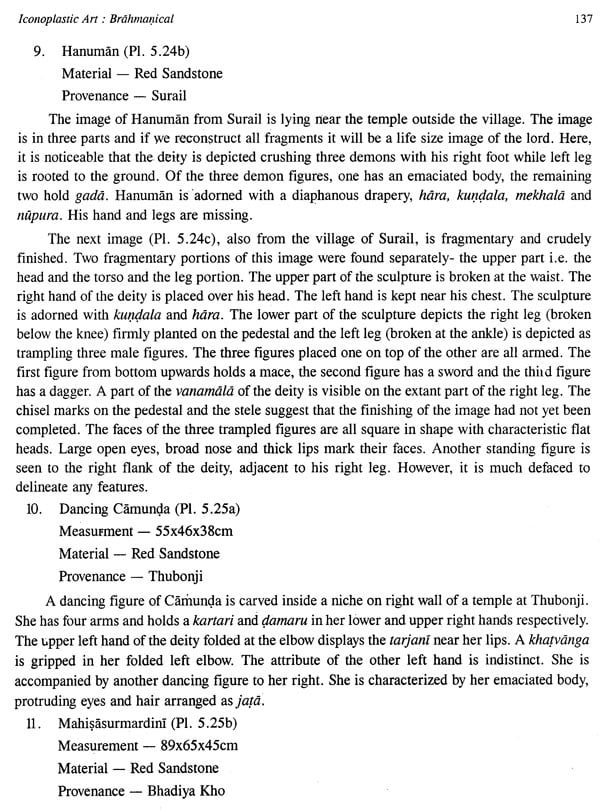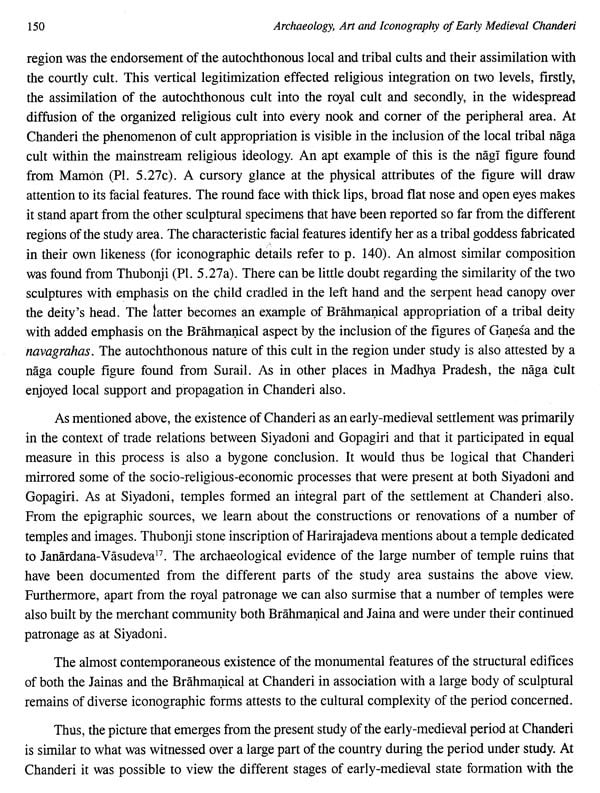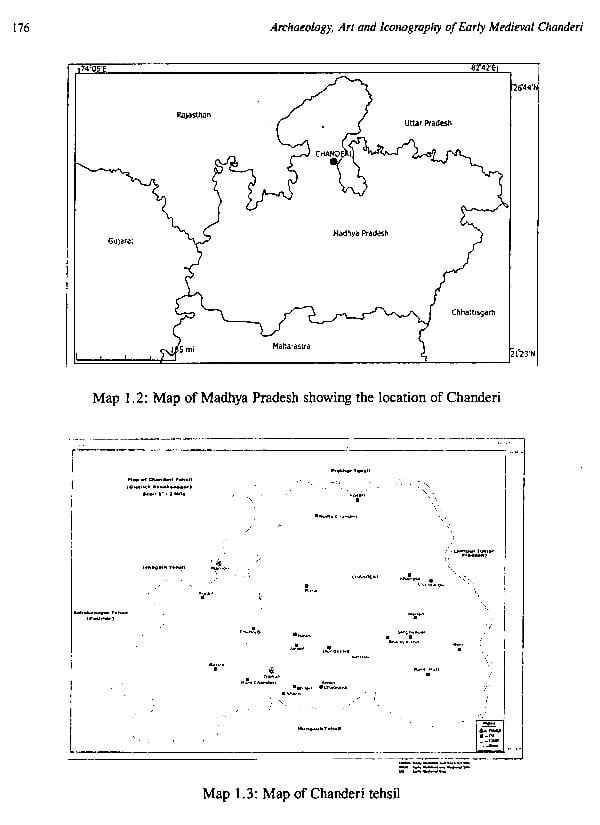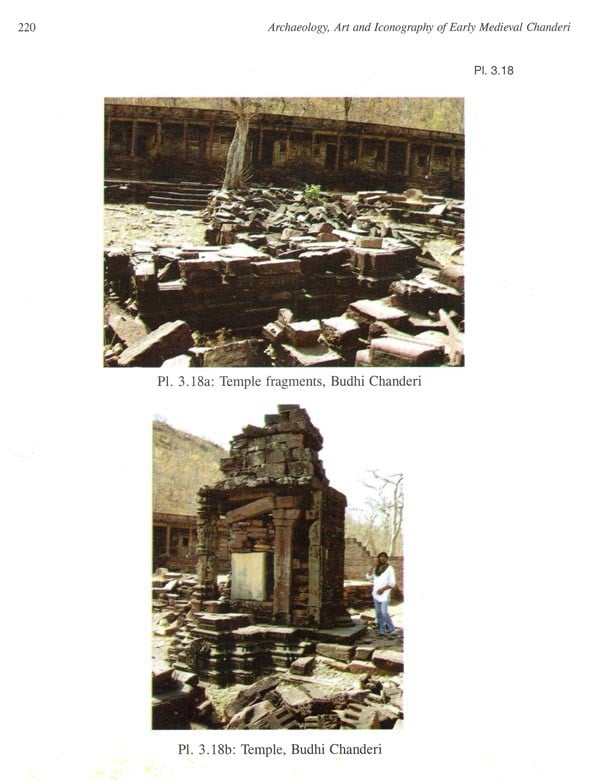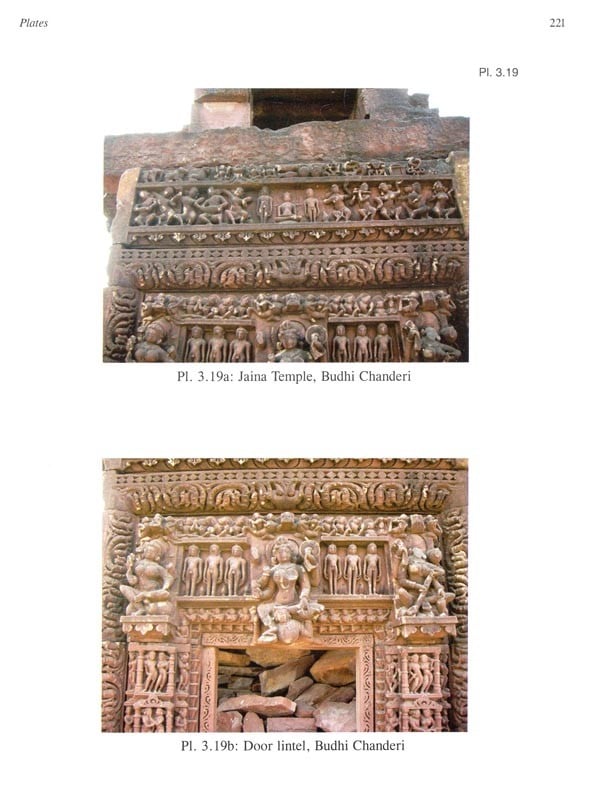
Archaeology, Art and Iconography of Early Medieval Chanderi
Book Specification
| Item Code: | AZE594 |
| Author: | Ranbeer Singh Rajput |
| Publisher: | B.R. PUBLISHING CORPORATION |
| Language: | ENGLISH |
| Edition: | 2015 |
| ISBN: | 9789350502211 |
| Pages: | 294 (Throughout B/w and Color Illustrations) |
| Cover: | HARDCOVER |
| Other Details | 11.00x9.00 |
| Weight | 1.14 kg |
Book Description
This work is the outcome of the series of explorations in the region under study carried out as a part of the author's Ph.D. The present work has brought to light a number of sites/artifacts ranging in time from the prehistoric to the early medieval period. The rich archaeological and epigraphic materials of the early medieval period from Chanderi compels us to investigate thoroughly the period under study in the light of the various theorizations and models that have been postulated by historians with respect to state formation processes. The book is richly illustrated with colour photographs of rock art, stone tools and line drawing of stone tools, sculptures, temples, digital maps, and location maps of the rock art explored sites.
He has field experience in exploration and excavation of prehistoric, protohistoric and historic sites. He has participated in excavations at Bhimbetka, Sanchi, Raisen Fort and Shivpuri and Baror. He has explored a number of painted rock shelters in Rajasthan, Andhra Pradesh and Tamil Nadu while working in the Indira Gandhi National Centre for the Arts (IGNCA), New Delhi. Besides, he has documented museum collection at Chanderi site museum (Madhya Pradesh) and Purana Qila site museum (New Delhi). He was also engaged in the report writing of Dholavira excavation. Dr. Rajput was also associated in organizing an International Conference on Rock Art in IGNCA. He has curated five exhibitions on 'The World of Rock Art' in Varanasi (Uttar Pradesh), Guwahati (Assam), Bhubaneswar (Odisha), Pondicherry (Puducherry), Bengaluru (Karnataka) and Tripunithura (Kerala) for the IGNCA.
Dr. Rajput has published several cles in books/journals. He is also the co-author of Rock Art: A Catalogue published by the IGNCA in collaboration with the Indian Archaeological Society, New Delhi. He has attended and organized several seminars and workshops including those on rock art studies. He was awarded a citation by Shri Bharatvarshiya Digamber Jain Teerth Sanrakshini Mahasabha, New Delhi in recognition of his contribution towards Jaina art and archaeology.
Dr. Rajput deserves congratulations for attempting to view his findings the light of state formation processes forms discussed theoretical issue and dealing with carly medieval history, particularly Central India. evaluating state formation processes. with respect Chanderi and its ruling Pratihara lineage, due care been taken consider the epigraphic Further, field work by Dr. new medieval and few prehistoric sites study thus, it comprehensive, its documentation fairly exhaustive and narrative adequate and competent in terms of descriptive archaeology.
feel happy presenting Dr. and the monograph to the world of scholars and of scholarship the of Indian and archaeology.
The post-Gupta/early-medieval period, in India, is generally viewed as a period that witnessed the decline of the so-called classical Gupta traditions. After the disintegration of the Imperial Gupta power, its erstwhile territories witnessed incessant power struggles between the local political formations. In central India these political formations were successively the Gurjjara-Pratiharas, the Paramaras, the Chandellas, the Kalachuris and the Kachchhapghatas etc. The almost contemporaneous existence of these dynasties in a geographically close knit area led to multiple and shifting power bases. Under the shadow of the volatile political scene dominated by the above mentioned dynasties there continued to exist some lesser political units which do not usually come to the fore but survived assumedly as feudatories. But after the political demise of the bigger political formations these feudatory identities rose through the ranks to give rise to local states as was witnessed at Chanderi. The political processes of the early-medieval and medieval periods, therefore, have to be conceived within a complex matrix of local and supra-local monarchical polities. It is well-known that the practitioners of the early-medieval paradigm have identified a number of historical-societal processes as characteristics of the period concerned. These include 1) local state formation process; 2) peasantization of tribes and caste formation; and 3) cult appropriation and integration.
**Contents and Sample Pages**
